This post may contain affiliate links. If you make a purchase through a link, I may receive a small commission, at no cost to you. These commissions help keep this website up and running, and I thank you for your support. Read my full disclosure here.
Disclaimers: I have in no way been influenced or paid to endorse these products. All recommendations are my own.
I am not a medical professional. Talk to your doctor before attempting any treatments that may affect your health.
Warning: Always apply a test patch before using.
I suffer from eczema as well as dry, flaky, and sensitive skin. At the moment I’m having problems with atopic eczema around my eyes and also flaky sensitive skin around my ears. I also suffer from pompholyx eczema (also known as dyshidrotic eczema) on my feet which causes itchy, burning, watery blisters, and my husband gets bad atopic eczema on his arms during winter. We’ve tried lots of different creams over the years, but many of them contain steroids which can cause some pretty serious side effects when used for prolonged periods. Therefore, I was very keen to find a natural, safe, and effective alternative.
In order to develop this skin salve recipe, I spent a considerable amount of time reading dermatological research articles to find ingredients that has scientifically supported evidence of treating eczema and dry, irritated skin. So far, this skin salve has been effective for treating both mine and my husbands eczema and irritated skin. It is very soothing for my sensitive atopic eczema, and also relieves the itching and burning of my pompholyx eczema. If you are interested in learning more, I’ve written up a short summary of each of the ingredients and why they are effective. Otherwise, just skip it and scroll down to the recipe! Of course eczema is a fickle thing to treat, so this may not work for everyone, but I think it is worth trying. This salve is oil based, so a little goes a long way and it stays put on the skin for a long time.

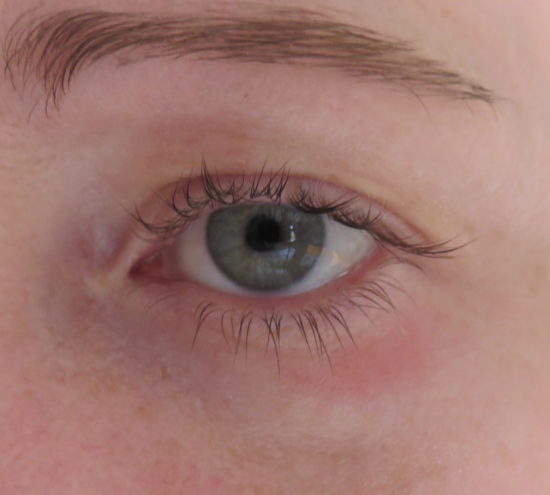
If you decide you can’t be bothered making your own salve, then purchase similar creams on the market like Aveeno Cream With Natural Colloidal Oatmeal and MG217 Eczema Body Cream with 2% Colloidal Oatmeal. Both products rate very highly in customer reviews.
This healing salve can be used for:
- Eczema
- Dry skin
- Sensitive, irritated skin
- Skin rashes
- Dry, cracked heals
- Razor burn
- Chapped skin
This all-natural recipe does not contain water, so does not need a preservative. It does contain vitamin E, which is not a preservative, but it does help to prevent the oils from going rancid. This salve has about a 6 month shelf life but you can extend this by keeping it in the fridge when you’re not using it, and always apply with clean hands.
If you like this recipe, then you might also be interested in my Soothing Goat Milk, Lavender, Oatmeal, and Vitamin E Soap Recipe for Eczema and Dry Irritated Skin.
Key Ingredients
Sweet Almond Oil
I love sweet almond oil because it’s packed with vitamin E which is great for dry and sensitive skin. As an emollient, it soothes itchy skin and has an occlusive effect which means it acts as a protective barrier for the skin and allows it to retain moisture. There is also lot of research¹ on the benefits of using sweet almond oil to reduce itching and redness. (FYI there is a lot of research on sweet almond oil being effective on stretch marks too).
Beeswax/Cadelilla Wax
The inclusion of wax in this recipe helps to firm up the salve which is particularly helpful in warmer climates. It also soothes, protects, and nourishes the skin. I like to use cosmetic grade triple filtered beeswax pellets because the pellets are easy to use (no grating!) and melt. You can use white or yellow beeswax. Using yellow will give your salve a yellow tint. If you find this salve too thick, then you can reduce the beeswax.
I know how hard it can be for vegans to find vegan friendly skin care, so this recipe can easily be adapted to make it vegan. Substitute the beeswax with candelilla wax, which is a natural wax derived from the leaves of the small Candelilla shrub that is native to northern Mexico and the southwestern United States. Candelilla wax sets much firmer than beeswax, so I suggest using half the amount.
Jojoba Oil
The use of the word ‘oil’ is very misleading because jojoba oil is actually a wax. Pronounced ‘ho-ho-ba’, it has a high content of wax esters. Consequently, research² has found it good at repairing dermatoses with altered skin barriers, such as seborrheic dermatitis, eczematous dermatitis, atopic dermatitis, and acne. Basically, it acts as an emollient which means it provides a protective film over your skin to trap in moisture. It is also very similar to our own sebum (skin oils), so it absorbs easily into the top layer of skin. Jojoba oil also has a proven anti-inflammatory effect, and is used to heal skin infections and wounds.
Shea Butter
Shea butter is my butter of choice. Similar to the jojoba oil, it is very similar to sebum (our skin oil) so it absorbs well into the skin. Research³ has shown shea butter to have potent anti-inflammatory and antioxidant properties and is very moisturising, particularly for dry skin. It also contains high levels of vitamins A and E and fatty acids. It does have a bit of a funny smell which some people do not like (but I think you get used to), but I do not find it overpowering or offensive. It is also non-comedogenic, which basically means it won’t block your pores.
Colloidal Oatmeal
Colloidal oatmeal is whole oat kernels that have been finely milled and processed in order to be used in skin care products. Oats in colloidal form is a centuries-old topical treatment for a variety of skin conditions, including skin rashes, erythema, burns, itch, and eczema. It has both anti-oxidant and anti-inflammatory activities and is used in 1-2% concentration.
The benefits of Colloidal oatmeal has been studied for many years and as a result there is a plethora of research4 out there, so I have selected just a few examples. Colloidal oatmeal is used in several eczema relief creams on the market, including Aveeno Cream With Natural Colloidal Oatmeal and MG217 Eczema Body Cream with 2% Colloidal Oatmeal. Both products rate very highly in customer reviews.
Vitamin E Oil
Vitamin E has been used for many years in skin care. It can alleviate itching, dryness, and flaking. It can also help soothe inflammation. Vitamin E oil is used both topically and orally5 to treat atopic eczema and aid in wound healing. Vitamin E is not a preservative, but it is an anti-oxidant which will help to keep the oils in this skin salve from going rancid. Vitamin E is safely used at 1-5% concentrations. I like to use it at around 1-2%, as it can irritate if used in too higher concentration.
When purchasing vitamin E oil, you can’t just use any old vitamin E. There are eight basic forms of the vitamin E molecule, and they can be either synthetically or naturally derived. The most typical forms are d-alpha-tocopherol, d-alpha-tocopherol acetate, dl-alpha tocopherol, and dl-alpha tocopherol acetate. The “d” prefix indicates that the product was derived from natural sources, such as vegetable oils or wheat germ; whereas the “dl” prefix indicates that the vitamin was created from a synthetic base. Research has shown that natural forms of vitamin E are more effective than their synthetic versions. You should also use one with a high International Unit (IU) which is a measurement of vitamins. Natural, high IU vitamin E oil such as this one is harder to find and is more expensive because it costs more to produce. However, a little goes a long way, so you will get a lot of use out of a bottle.
Did you know that taking vitamin E orally can improve the symptoms and quality of life for those with atopic dematitis? Vitamin E has no side effects with a dosage of 400 IU per day, so this is the recommended dosage for treatment. Take one of these 400 IU vitamin E capsules.
Why I Have Not Included Essential Oils and Coconut Oil in This Skin Salve Recipe
I enjoy using essential oils in my DIY skin care recipes, but they can cause irritation and stinging on raw skin, so I left it out of this recipe. However, if you wish to include it, then try adding lavender essential oil as it can be soothing on skin. Use a 2% dilution, which is considered the ‘ideal’ amount for most normal adults in topical applications such as this skin salve. So basically that works out to be 10 – 12 drops per fluid ounce/ 30 ml of carrier oil which is about 60 drops for this recipe. If you are trying to work out how many drops to use, then use this handy dilution conversion guide.
I have not included coconut oil in the recipe because some people are allergic to it. Also, coconut oil has a high comedogenic rating and therefore isn’t recommended for use on the face. As I have eczema on my face that I wanted to treat, I chose to not include it. Comedogenicity is a rating that is based on the degree to which the oil is likely to clog your pores. In simpler terms, oils with a high comedogenic rating have a significant chance of causing or aggravating acne and blackheads. Whereas non-comedogenic oils are much less likely to cause these problems. You can learn more about this in my post Should I Use Coconut Oil on My Face?
What Container to Use
This recipe makes about 100ml, depending on whether you are using US or UK measurements. It’s OK if you are not perfectly accurate with the ingredients. I love to reuse old face cream jars, but make sure that the jars are very clean before using to help extend its shelf life. I run them through a hot cycle in my dishwasher.
I like to put the cream into 2 x 50ml containers. I leave one in the fridge while I use the other, which I keep by my bedside. If you don’t have any spare containers, then use these 50 ml refillable amber glass cosmetic jars or these larger 120 ml amber glass jars.

All-Natural Salve Recipe for Eczema and Dry Irritated Skin
Ingredients
- 1/4 cup sweet almond oil
- 2 tbsp beeswax pellets (vegans substitute with 1 tbsp of candelilla wax)
- 1 tbsp Jojoba oil
- 1 tbsp Shea butter
- 1 tsp colloidal oatmeal
- 1/2 tsp Vitamin E oil
- 1 pyrex bowl with pouring spout
- 1 large saucepan
- 100 ml glass jar
Instructions
- Place the shea butter, sweet almond oil, jojoba oil, and beeswax (or candelilla wax) into your heatproof bowl and place it into a saucepan filled with about 5 cm (2 inches) of hot water that is sitting over a medium-low heat.
- Make sure that none of the water from the saucepan gets into your oils.
- Gently stir until the ingredients have completely melted into a liquid and combined. Don't leave it sitting on the heat any longer than needed, as you don't want it to get too hot otherwise it could reduce the efficacy of the ingredients.
- Remove the bowl from the saucepan and dry off the water from the outside of the bowl so it doesn’t drip onto your work surface and salve.
- Leave the oil to cool down for 5-10 mins, then stir in the vitamin E and the colloidal oatmeal. Keep stirring it until the salve starts to firm up and the oats are suspended (not sinking to the bottom). Alternatively, you can pour it into your jar and keep stirring it with a kebab stick until it thickens so the oats don't sink.
- Scoop the salve into your jars and leave it to cool.
Notes
- You can use US or UK measurements, it is not essential to be perfectly precise!
- It's important that you don't overheat the oils, as this can destroy their nutrients and therefore lose its efficacy.
- If you live in a hot climate, you may need to add more wax to ensure a firmer consistency.
- This recipe does not contain water so it does not need a preservative. It has about a 6 month shelf life. To extend it’s shelf life, keep it in the fridge when not in use and always use clean hands to apply.
References
1.) Sweet Almond Oil
Timur Tashan S., Kafkasli A. The effect of bitter almond oil and massaging on striae gravidarum in primiparaous women. J. Clin. Nurs. 2012;21:1570–1576. doi: 10.1111/j.1365-2702.2012.04087.x.
Hajhashemi M., Rafieian M., Rouhi Boroujeni H.A., Miraj S., Memarian S., Keivani A., Haghollahi F. The effect of Aloe vera gel and sweet almond oil on striae gravidarum in nulliparous women. J. Matern. Fetal Neonatal Med. 2017:1–6. doi: 10.1080/14767058.2017.1325865.
2.) Jojoba oil
Meier L., Stange R., Michalsen A., Uehleke B. Clay jojoba oil facial mask for lesioned skin and mild acne—Results of a prospective, observational pilot study. Forsch Komplementmed. 2012;19:75–79. doi: 10.1159/000338076.
Ranzato E., Martinotti S., Burlando B. Wound healing properties of jojoba liquid wax: An in vitro study. J. Ethnopharmacol. 2011;134:443–449. doi: 10.1016/j.jep.2010.12.042.
Pazyar N., Yaghoobi R., Ghassemi M.R., Kazerouni A., Rafeie E., Jamshydian N. Jojoba in dermatology: A succinct review. G. Ital. Dermatol. Venereol. 2013;148:687–691.
3.) Shea Butter
Hon K.L., Tsang Y.C., Pong N.H., Lee V.W., Luk N.M., Chow C.M., Leung T.F. Patient acceptability, efficacy, and skin biophysiology of a cream and cleanser containing lipid complex with shea butter extract versus a ceramide product for eczema. Hong Kong Med. J. 2015;21:417–425.
4.) Colloidal Oatmeal
Toni Anne Lisante, Chris Nuñez & Paul Zhang (2017) Efficacy and safety of an over-the-counter 1% colloidal oatmeal cream in the management of mild to moderate atopic dermatitis in children: a double-blind, randomized, active-controlled study, Journal of Dermatological Treatment, 28:7, 659-667, DOI: 10.1080/09546634.2017.1303569
Nebus J., Nystrand G., Fowler J., Wallo W. A daily oat-based skin care regimen for atopic skin. J. Am. Acad. Dermatol. 2009;60:Ab67.
Reynertson K.A., Garay M., Nebus J., Chon S., Kaur S., Mahmood K., Kizoulis M., Southall M.D. Anti-inflammatory activities of colloidal oatmeal (Avena sativa) contribute to the effectiveness of oats in treatment of itch associated with dry, irritated skin. J. Drugs Dermatol. 2015;14:43–48.
Sur R., Nigam A., Grote D., Liebel F., Southall M.D. Avenanthramides, polyphenols from oats, exhibit anti-inflammatory and anti-itch activity. Arch. Dermatol. Res. 2008;300:569–574. doi: 10.1007/s00403-008-0858-x.
5.) Vitamin E Oil
Tsoureli-Nikita E, Hercogova J, Lotti T, Menchini G. Evaluation of dietary intake of vitamin E in the treatment of atopic dermatitis: A study of the clinical course and evaluation of the immunoglobulin E serum levels. Int J Dermatol. 2002;41:146–50.
Ellinger S, Stehle P. Efficacy of vitamin supplementation insituations with wound healing disorders: Results from clinical intervention studies. Curr Opin Clin Nutr Metab Care. 2009;12:588–95.


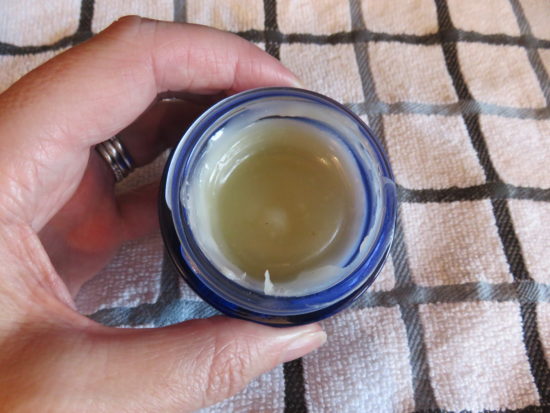
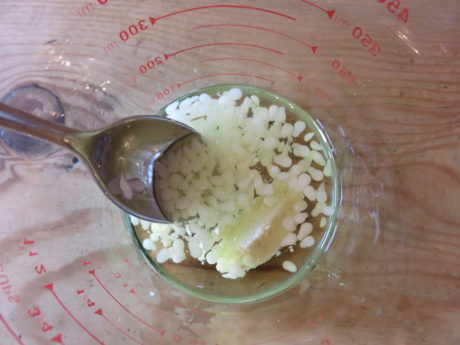
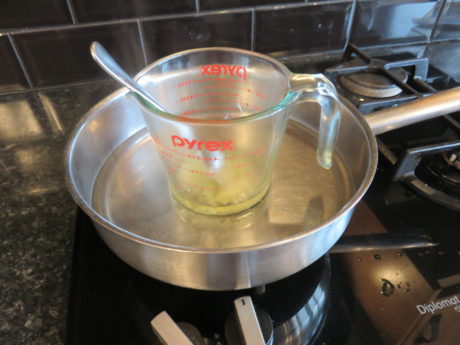
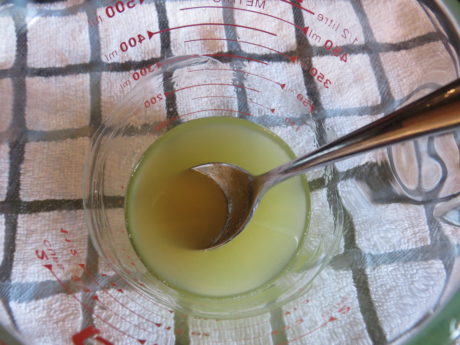
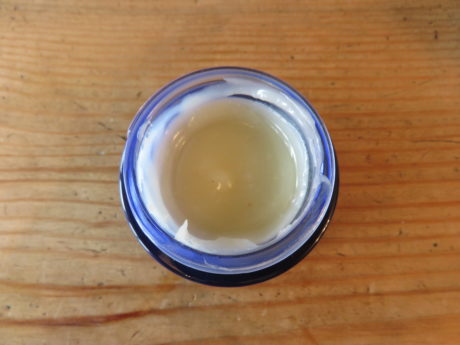
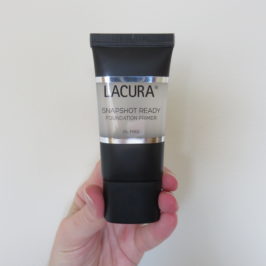
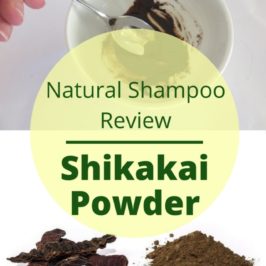
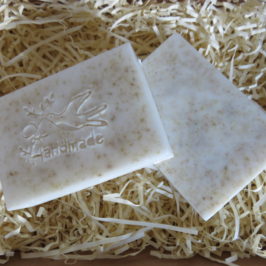
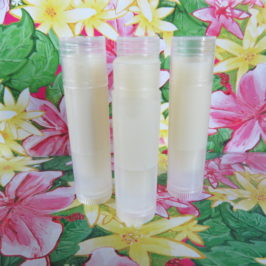
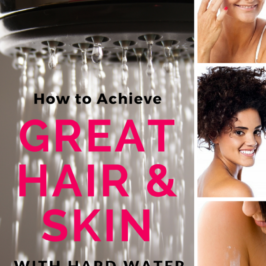
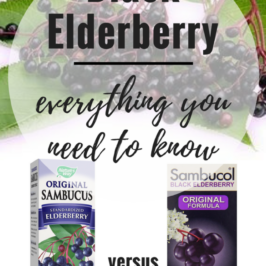
Jacx
Thank you for this article and recipe. I’m allergic to anything coconut. It seems to be in every thing from shampoos, soaps, dish soap, body lotions, makeup, including toothpaste. I use plain tallow soap (Etsy) to wash my hair followed with a weekly apple cider vinegar rinse. I’m also allergic to anything nickel, which food, such as oatmeal, is high in. So I can not use oatmeal of any sort. When making this recipe, I just out leave out the oatmeal. Thanks again for recipe
Ajna
I have tried to add colloidal oatmeal to an anhydrous formula before (around 1.5%), and the consistency is just not smooth. I can feel the oatmeal like a tiny sand particles in it, as I read that it’s only soluble in water. Do you have the same issue with your salve?
Colleen
Hi Ajna,
I use pharmaceutical grade colloidal oatmeal. To be effective, colloidal oatmeal is micronized to a very small particle size then processed so the starch is modified so it can be effectively dispersed into creams, lotions etc.. I don’t have any issue with grittiness. The cream is designed to act as a barrier on the surface of the skin. However, I don’t see an issue with you using your oatmeal if you don’t mind the texture. Oatmeal is often used in a larger particle size e.g. in face masks as it is soothing on skin.
Lauren Cosson
Hi, I just made this the other day for my 4 yr old daughter for her eczema. I made it 4 days ago and have used it twice a day on her flare up up areas. Within minutes she says it makes her more itchy and the eczema gets noticeably redder. I know she isn’t allergic to any of the ingredients because she has had lotions with the same stuff in it. Any thoughts on this?
Colleen
You should always test any new products on a small patch of skin to ensure you don’t have a reaction to it. Potentially there may be an issue with the ingredients you used and whether they had any additional additives in it? Other than testing each ingredient to identify what is causing it, then it is difficult to say what would cause this reaction. Children’s skin can also be much more sensitive than adults. Sometimes children (and adults) can react to something that they may have been exposed to without problems many times before.
Lori
I made this and love it but need to make more and your amounts aren’t showing up in the recipe 🙁 please help!!!
Colleen
Hi Lori,
Sorry about that, one of my plug-ins has broken all of the links on my website, so I will have to spend my Easter break fixing them! I have fixed this post for you so you should be able to read the recipe and ingredients now. Thanks for your patience.